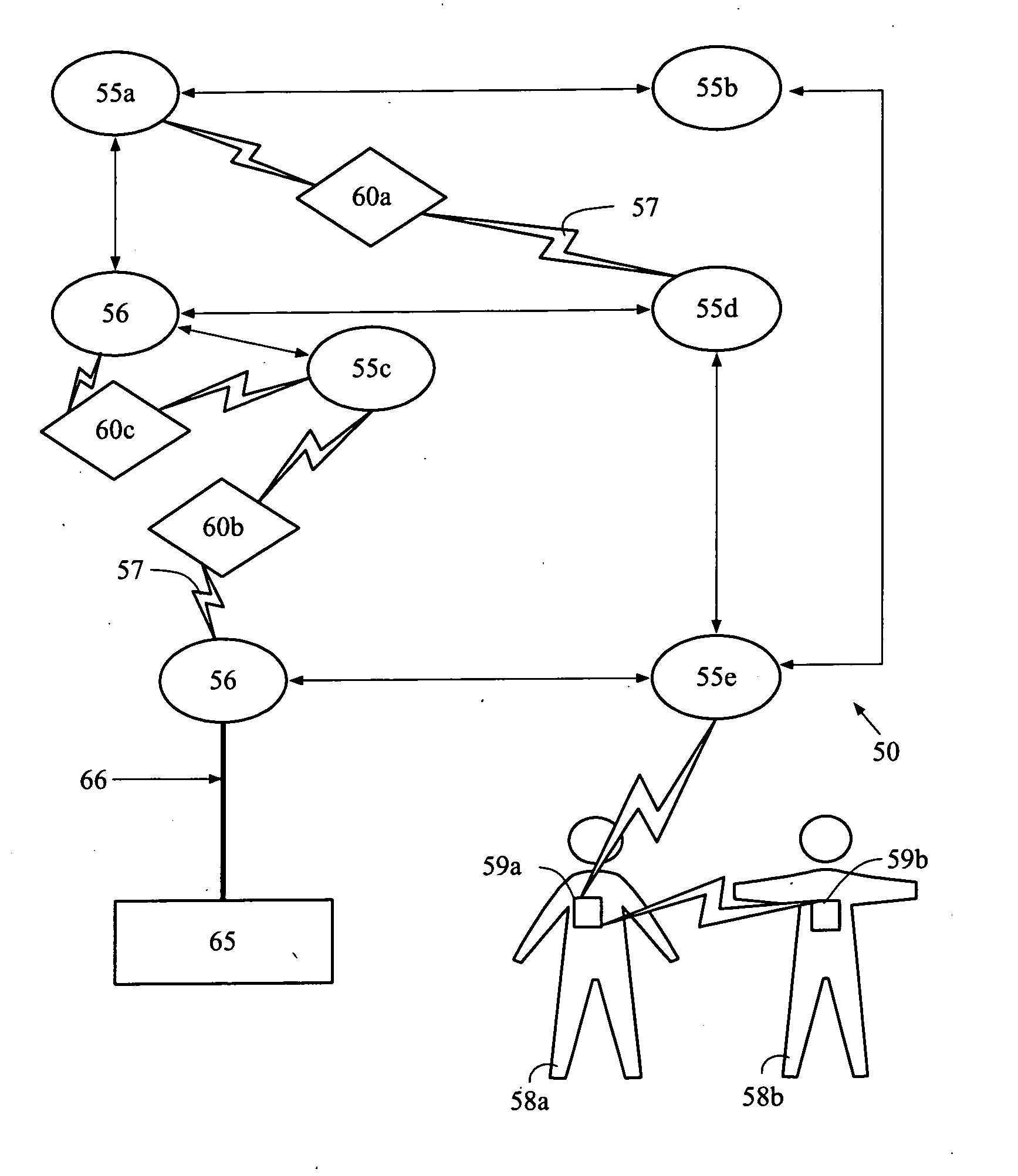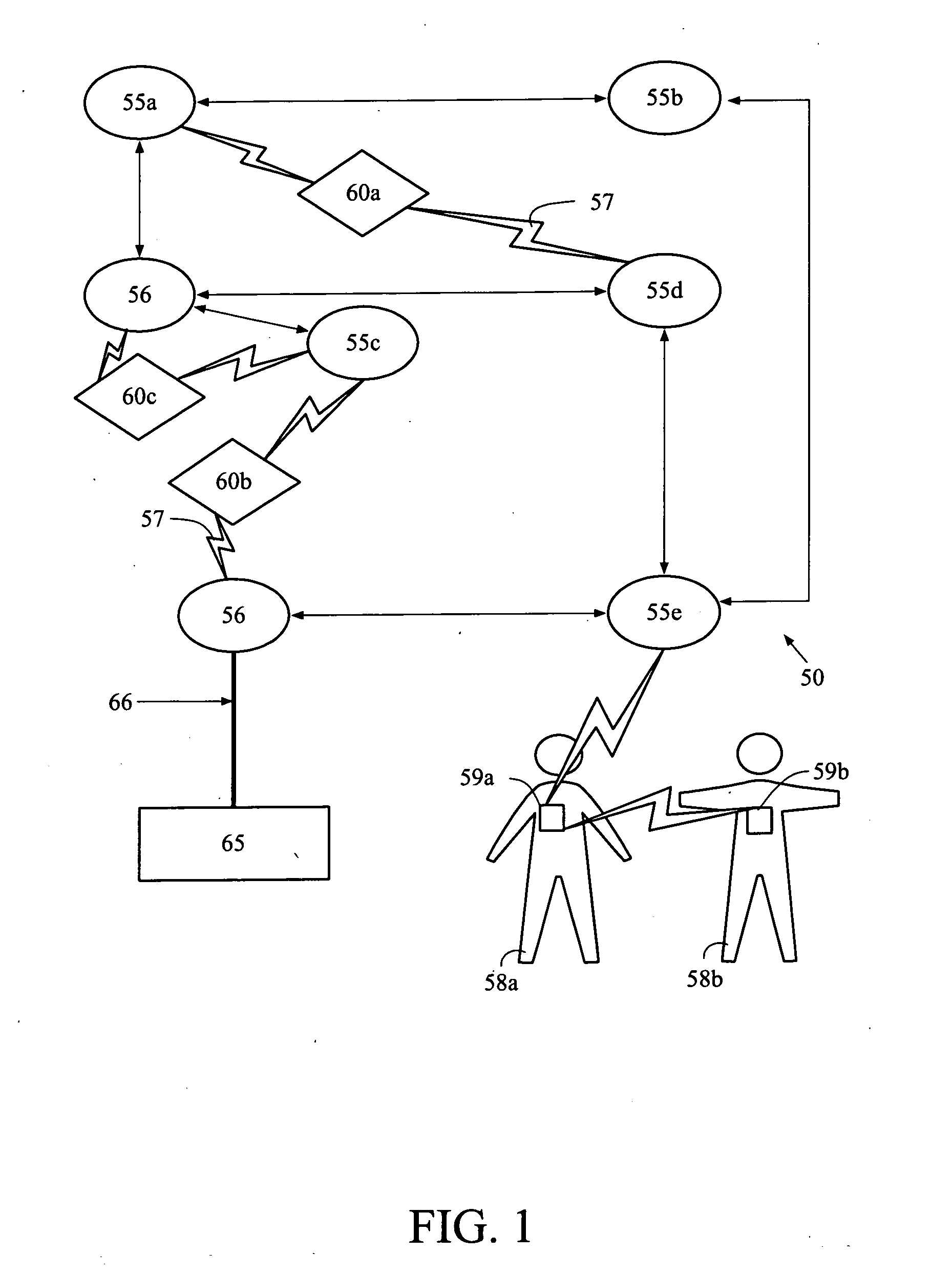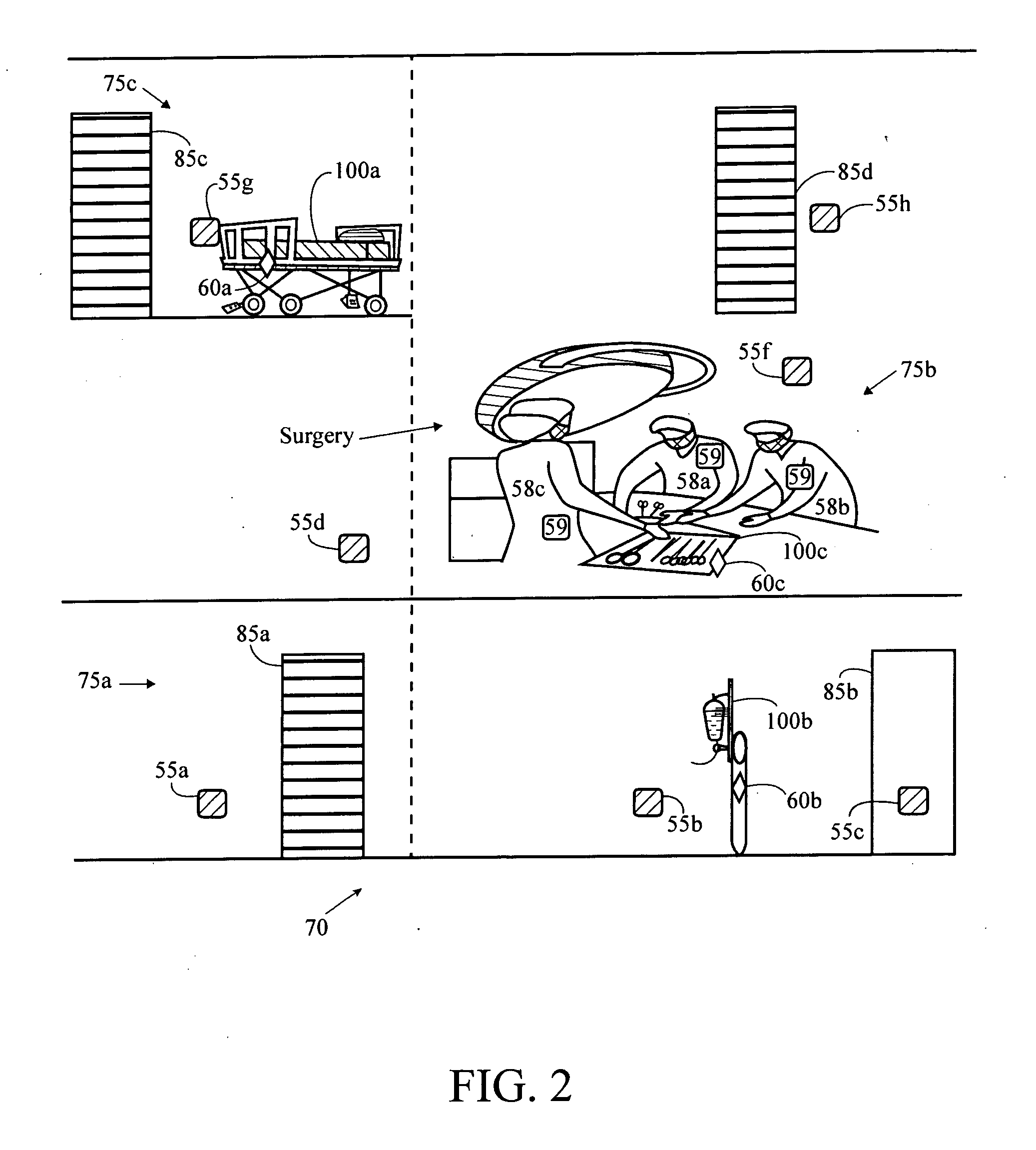Wireless Tracking System And Method Utilizing Near-Field Communication Devices
a tracking system and communication device technology, applied in data switching networks, program control, instruments, etc., can solve problems such as insufficient resource visibility in a business and prior art failure to provide an adequate solution to these problems, and achieve the effect of increasing the transmission ra
- Summary
- Abstract
- Description
- Claims
- Application Information
AI Technical Summary
Benefits of technology
Problems solved by technology
Method used
Image
Examples
Embodiment Construction
[0051]As shown in FIGS. 1-3, a system for tracking objects within a facility is generally designated 50. The system 50 is capable of analyzing an interaction between objects, individuals 58 and / or objects 100. The system 50 preferably includes a plurality of sensors 55, a plurality of bridges 56, a plurality of near-field communication devices 59, a plurality of tags 60, and at least one information engine 65. The sensors 55 form a mesh network for receiving signals from the near-field communication devices 59 and tags 60. One example of the components of the system 50 is disclosed in U.S. Pat. No. 7,197,326, for a Wireless Position Location And Tracking System, which is hereby incorporated by reference in its entirety. A more specific example of the sensors 55 is disclosed in U.S. Pat. No. 7,324,824, for a Plug-In Network Appliance, which is hereby incorporated by reference in its entirety.
[0052]The system 50 is preferably employed at a facility 70 such as a business office, factor...
PUM
 Login to View More
Login to View More Abstract
Description
Claims
Application Information
 Login to View More
Login to View More - R&D
- Intellectual Property
- Life Sciences
- Materials
- Tech Scout
- Unparalleled Data Quality
- Higher Quality Content
- 60% Fewer Hallucinations
Browse by: Latest US Patents, China's latest patents, Technical Efficacy Thesaurus, Application Domain, Technology Topic, Popular Technical Reports.
© 2025 PatSnap. All rights reserved.Legal|Privacy policy|Modern Slavery Act Transparency Statement|Sitemap|About US| Contact US: help@patsnap.com



